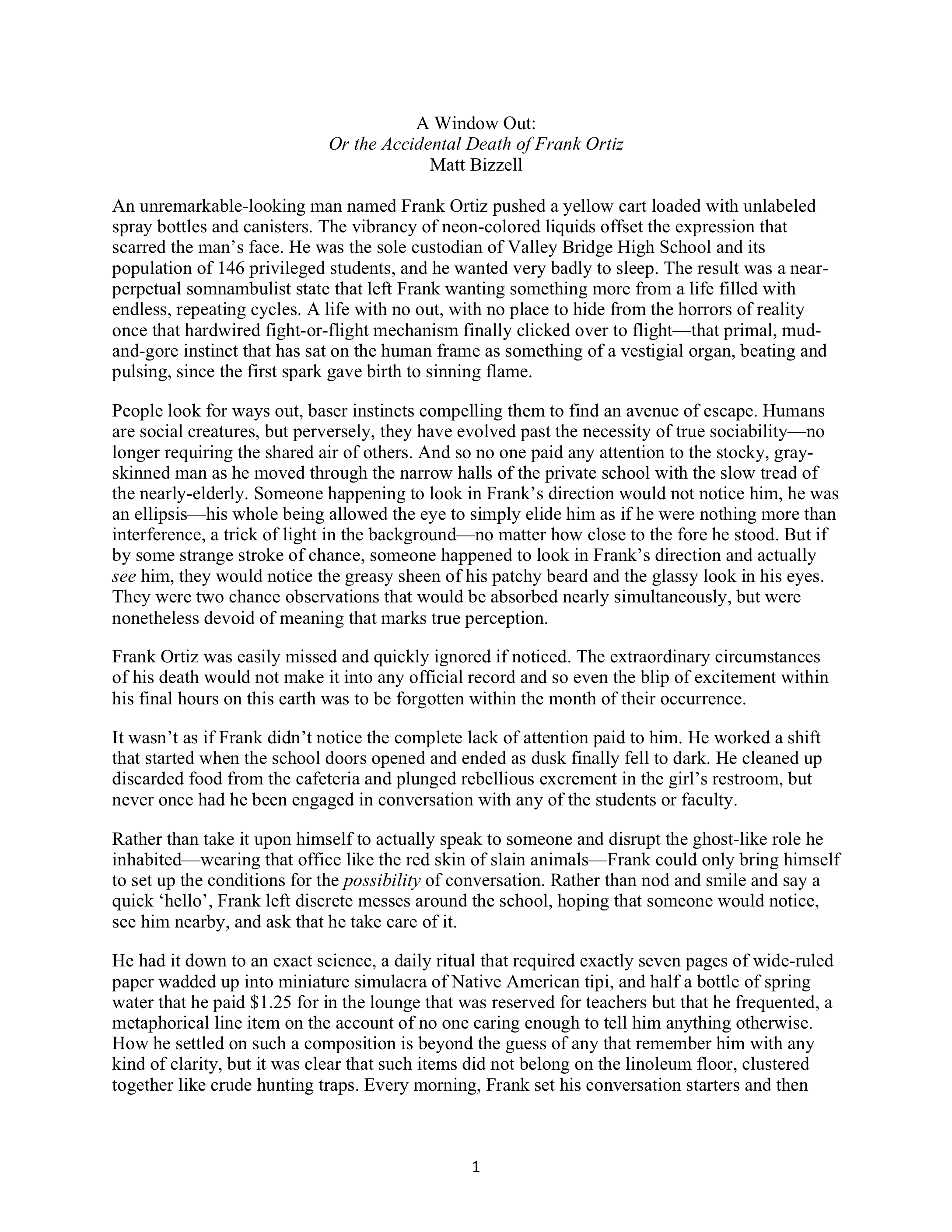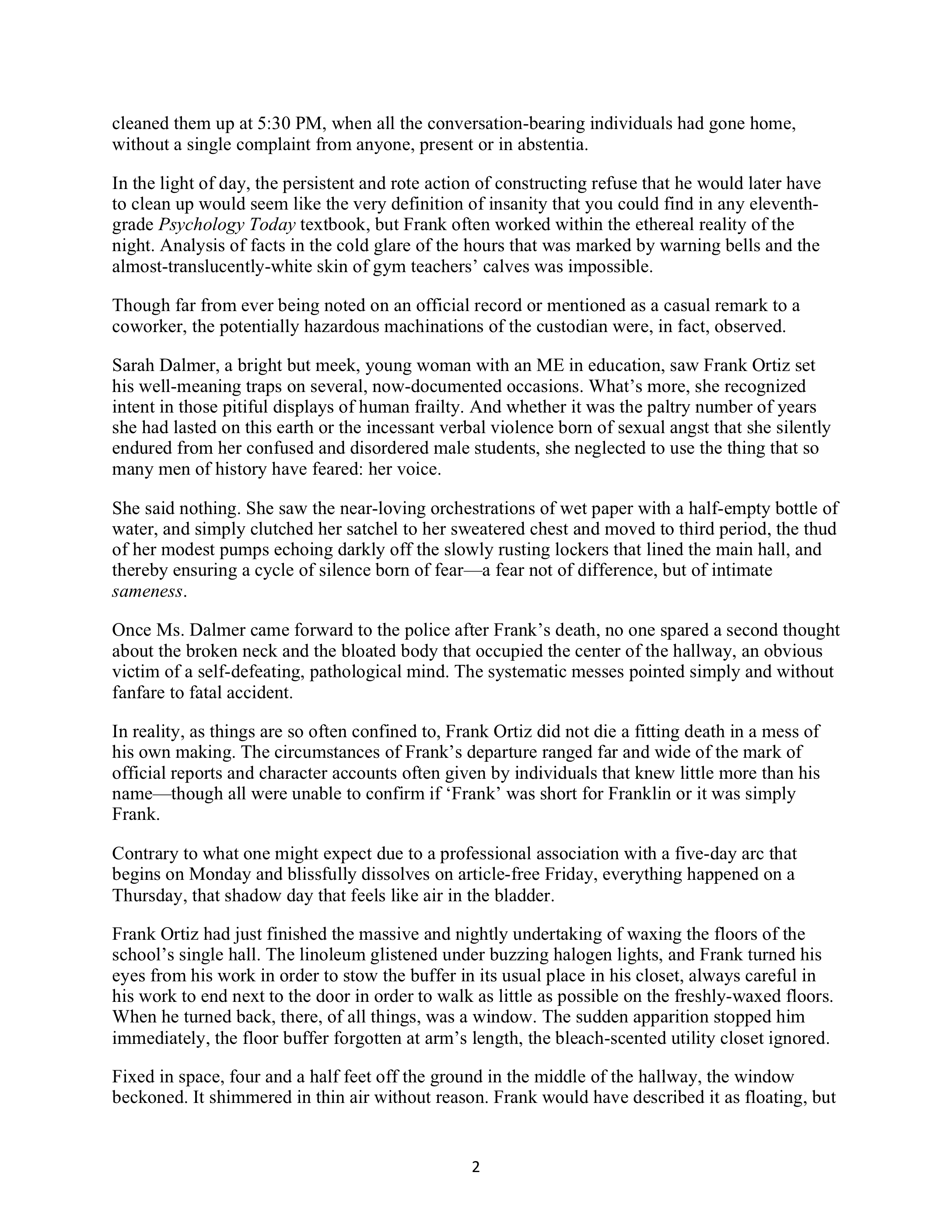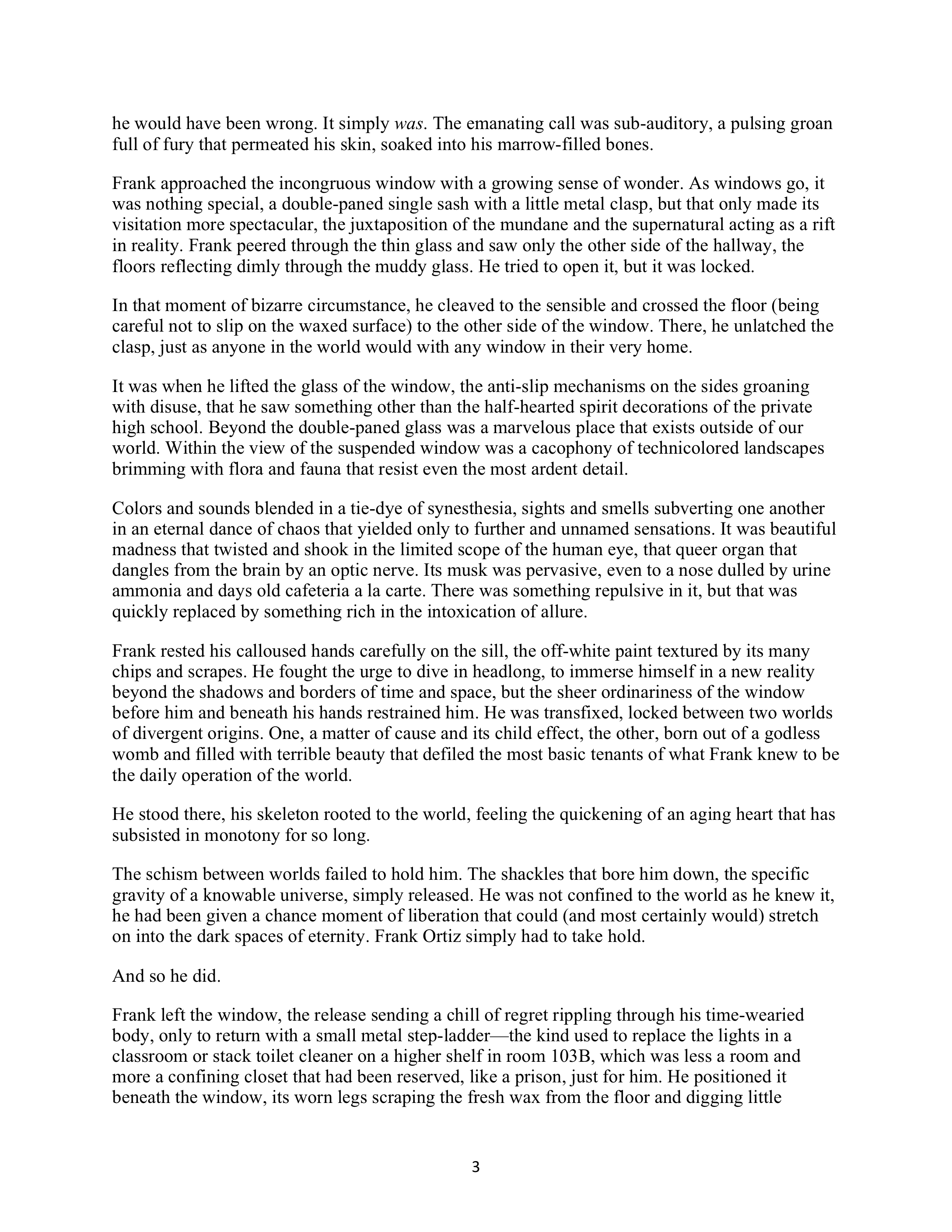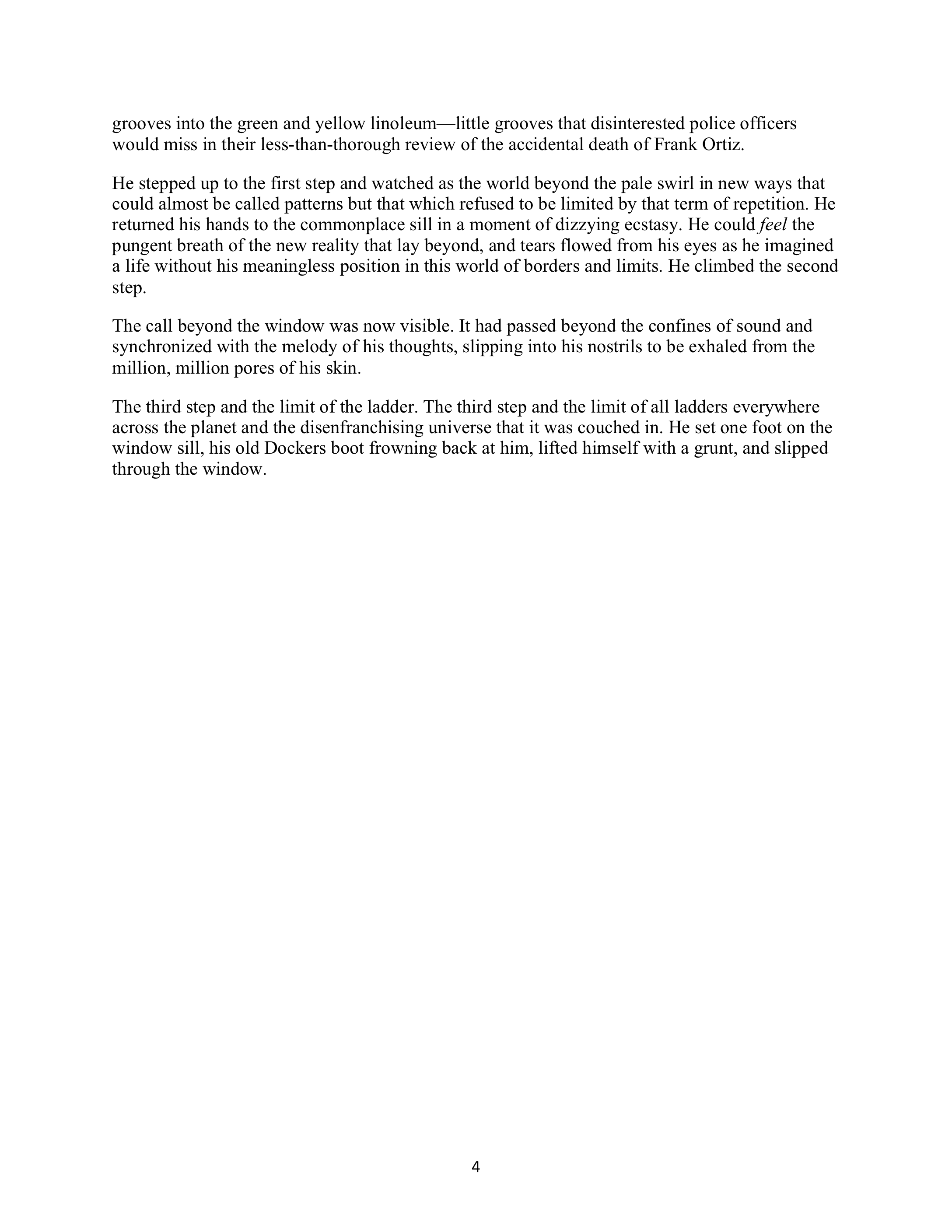What are scene and story climaxes? Why do you need them? In this episode, I talk about the decisions your characters make, as well as the actions they take, when faced with a dilemma. You’ll hear Matt Bizzel’s horror short story, “A Window Out: Or, the Accidental Death of Frank Ortiz” and my analysis of the scene. The editorial mission encourages you to collect examples of these critical decisions and actions by reading and watching stories—and from your own life.
If you could use some help staying focused and a place to ask questions and celebrate your successes, consider joining the Writership Podcast Slack community.
Listen to the Writership Podcast
Wise Words on Climaxes in Stories
“A climax is the active answer to the question raised by the crisis.
It’s the choice the character makes between the best bad one or between irreconcilable goods. This is the big reveal of character. Not who he says he is, but who he really is.”
“The Climax of the last act is far and away the most difficult scene to create: It’s the soul of the telling.”
Scene and Story Climaxes
The Climax is one of the Five Commandments of Storytelling, so before we dive into this discussion, here’s a quick recap of what they are and how they’re connected: Commandment is a term that can rub folks the wrong way, but what we really mean is that these are fundamental principles of dramatic structure, described by Aristotle and refined by people like Gustav Freytag, Robert McKee, and Shawn Coyne.
Shawn has also made the connection to the Kubler-Ross change curve, which describes the steps people move through when they experience grief related to change. So what does that mean? Stories are about change, and the Five Commandments give us a language to talk about story structure, which mimics the way people metabolize change.
Most stories open with the protagonist minding their own business when an inciting incident comes along and upsets the status quo. The inciting incident creates a desire and goal to arise within the mind of the protagonist. As they pursue the goal, obstacles and tools arise, which we call progressive complications. An unexpected event, or the turning point progressive complication, happens, forcing the protagonist into a dilemma, which we call the crisis question. The protagonist decides between the two options and acts on that decision in the climax. Then consequences flow from there in the resolution.
So that’s how the Five Commandments of Storytelling work in your story. They also work in smaller units of story, including subplots, acts, sequences, and most important for our discussion today, scenes.
Decision and Action
As Shawn Coyne says, “the climax is the truth of the character.” The global climax is the moment of truth when the character can choose to abandon their previous strategy that didn’t work for a chance to try a new strategy, if they have the mettle to try. A character reveals who they are when they make decisions under pressure. This is not the only way to establish who your character is, but I would say it’s the most important way.
If we look at it another way, we can say stories are about change that occurs as the result of action through conflict. The climax is the action that yields the change in the scene or other unit of story. (If you’re keeping score, the progressive complications are the conflict that forces the action.)
The decision and action should be apparent in your scene or in its aftermath, though the decision is not always explicit. (That could lead to some odd pronouncements.) The reader can often assume the decision from what the character does.
It’s vital that the writer establish the climax within the context of the scene because scene climaxes demonstrate the gradual change in a character and their circumstances over the course of the story.
Alignment
The Climax should be aligned with the other commandments in the scene. But what does this mean?
The inciting incident of the scene or story should raise a question in the mind of the reader (just as it causes a desire and goal to arise within the character). The decision and action should be related to the reader’s question.
The character’s pursuit of their goal, which arises from the inciting incident, and progressive complications should create a chain of cause and effect that naturally lead to the decision and action of the climax.
The climax should answer the question presented by the crisis question.
The resolution should show us what unfolds as a result of the climactic action.
Reversibility
Some decisions in life can be reversed, but others can’t. If a decision within a scene can be easily rescinded, then there isn’t much at stake, tension drops, and the reader might quickly lose interest. It feels like cheating to put the character in a bind, force them to make a tough decision, and let them undo it without consequence. But there is a range of reversibility: Some decisions can be undone, others can be undone with some cost or consequence, and some cannot be undone.
Consider these two examples:
If you buy a pair of shoes and realize they don’t fit when you try them on at home, chances are you could return them and get the correct size. And if the shoes are not returned in time, there may be a restocking fee or some other penalty. But if you’ve worn the purchased shoes outside, the store might refuse to take them back.
If you reveal spoilers before a friend has seen a movie and then apologize, you’ll probably be forgiven. And if you reveal a friend’s secret, the friend may need time or an act of amends before they can offer forgiveness, even if you’ve caused no actual harm. But if you reveal damaging information that causes your friend to lose their job or their romantic partner, they might not be able to forgive, even with time. (In any case, the decision to share is irreversible; the cat is out of the bag. But the harm that flows from it could possibly be reversed.)
Over the course of a story, the decisions the character makes should become increasingly irreversible so that when the reader reaches the Story’s Global Climax, there is no question of the character’s being able to call for a do-over. Within smaller units of story (subplots, acts and sequences), the scene climax decisions and actions should also become more irreversible from the beginning to the end.
Scene to Story
Your scenes don’t exist in a vacuum and should connect to the Global Story spine. The climax (decision and action) within a scene should affect the character’s scene goal, but it should also be related to the Global Story Objects of Desire, or their needs and wants. Whatever the character decides should bring them closer to or further from that story-level goal.
Our Submission
(Scene Analysis and Editorial Mission follow submission)




Scene Analysis
Story Event
1. What are the characters literally doing?
Frank discovers a mysterious window and goes through it into another world.
2. What is the essence of what the characters are doing?
Frank wants to get to the bottom of what’s beyond the window.
3. What life value has changed for one or more characters in the scene? This is where we cast a wide net looking for almost anything that changes from the beginning to the end of the scene.
Frank’s life value changes from life to death.
Frank’s workday goes from being mundane to quite extraordinary.
4. Which life value is most relevant to the global or primary genre, the one that would go in a Story Grid spreadsheet?
This depends on what the global or primary genre is. Matt suggested that this is a horror story, and that sounds accurate to me. A horror story is about the interaction between a non-heroic protagonist and a monster of some kind—this doesn’t have to be a literal monster, but could be something unexplained, like the window and the world Frank encounters on the other side of it.
The life value at stake in a horror story is life and death, but a fate worse than death or damnation also has to be a very real possibility. So if we were to create a spreadsheet for this scene, we would say that Frank’s life value changed from life to death (we could get even more specific if we knew more about the nature of his death, but with the ambiguous ending, this is also ambiguous. As the writer, you would want to know what your intention is).
5. Story Event for Spreadsheet: This is a precise summary of what happens in the scene.
An ordinary window appears in the school hallway, and Frank’s dead body is discovered after he observes a magical world within the window and enters it.
Five Commandments
1. What is the inciting incident?
A window appears in the hallway of the school where Frank works.
2. What are the progressive complications and turning point?
In his attempts to investigate the window, Frank is thwarted because it’s an ordinary window, because he can only see the rest of the hallway when he looks through it, and because he can’t open it on the side where he first observes it.
Turning point: He moves to the other side and is able to open the window where he beholds an extraordinary sight.
3. What is the crisis?
Enter the window or not?
Is it a Best Bad Choice or Irreconcilable Goods Choice? It depends on how you look at it. BBC: his existence is crappy, but something bad could happen inside the window. IGC: He could stay safe or could have an adventure and discover something cool in the window world.
4. What is the climax?
Frank enters the window, but let’s look a little more closely.
Are the decision and action clear? Yes. We are told that Frank decides to enter the window, and then he obtains a ladder, climbs it, and slips through the window.
Does the climax align with the rest of the commandments? Absolutely.
How reversible is his decision and action? Completely irreversible by all appearances, which is important since this is the story climax as well as that of the scene.
Is the Climax aligned with the other commandments in the scene? Yes
The inciting incident is the appearance of the window, which occurs after we learn of Frank’s status quo: a routine and lonely existence with no real human connection. When the window appears, we might wonder about its nature and what it might lead to, but given the focus on Frank up to that point, we are quite curious about what he will do with/about it. Remember that we also already know that Frank is going to die (more on that in a moment), so we might wonder how that’s going to happen.
Progressive complications are obstacles to his figuring out what’s on the other side and accessing it. The turning point progressive complication shows us what he finds when he opens the window.
As I said, the crisis question that arises from the turning point is, will he will enter or not, which is answered by the Climax.
5. What is the resolution?
Frank’s dead body is discovered in the hallway (no window in sight), apparently the result of a tragic accident. Ms. Dalmer told them what she had observed of Frank, and no one spares a second thought on Frank’s demise.
There are two points I want to make about the Resolution. First, going back to the climax assessment: The scene’s resolution is aligned with its climax, though we’re still missing quite a bit of information about exactly how it happens and what it means. This open-ended conclusion was an intentional choice. Matt included this note with his submission: “In the end, the reader is given the option to believe in Frank's physical death and/or the transcendence of his spirit to a place unimagined by humanity.” Not every reader appreciates an ending that is less than certain, but often endings like this leave us thinking about them long after we close the book. If you’re considering an ending like this, think about what you’re trying to achieve with your story and whether it works with the rest.
Second point: This resolution appears before the inciting incident. Sometimes the Five Commandments are presented out of order, which often happens when you employ dramatic irony as your mode of narrative drive. Examples include One example of this is the Sisters Grimm series of middle grade by Michael Buckley, and in movies you see it in the 2011 version of Jane Eyre, Fight Club, and Inception.
Narrative drive is the method you use to compel your reader to stay the course. But as a practical matter it’s about how much information the reader has relative to the characters. Narrative drive determines why we read on by the questions we ask ourselves. Anne Hawley and I talked about it in episode 108 in the context of the first scene of Mike Ward’s story Esperanza.
Dramatic irony happens when the reader knows more than the character and is pulled through the story out of concern for the character (e.g., we wonder, how does Frank die?).
Mystery happens when the character has more information than the reader, and the reader is pulled through the story by intrigue (e.g., what’s going to happen?).
Suspense happens when the character and reader possess the same amount of information, and the reader is pulled through the story by intrigue and concern (e.g., when Frank discovers the window, we’re as curious about it as he is)
Of course, in any given story event, the reader will have their own range of emotions and circumstances that keep them reading or not. But we can use these forms of narrative drive with intention to create a particular experience.
So what does this mean for these scenes? What would be the next steps for this submission?
Of course, my suggestions always depend on whether I’ve read the scene the way the writer intended. The meaning of a scene is often in the eye of the reader. If I’ve read it incorrectly, you may want to consider if your intention is making it on to the page, but keep in mind that I haven’t read the whole story. Remember, no matter who is giving you feedback on your story, consider it, but weigh it in light of what you know about the story you are trying to create.
As I read it, Matt has a solid working scene here. We have conflict, action, and change. The Five Commandments are clear and are aligned with one another, as well as the character’s essential action.
One thing he might consider is whether the open-ended resolution of the entire story works or would feel like a cheat or a trick. My hunch is that it works (or at least it worked for me), but I would ask this question of any open-ended conclusion.
Editorial Mission—Gather Story and Scene Climaxes for Your Stories
As you read or watch stories, identify story and scene climaxes. Are the decisions and actions apparent? Do they align with the other commandments? Where does the climax fall on the spectrum of reversibility? Are the decisions becoming more and more reversible as you move through the story?
Begin compiling a list of climaxes from the stories consume to use as you plan, draft, and revise scenes for your stories.
And then, in the context of your own life, consider the decisions you’ve made and actions taken when you’ve faced a dilemma. Look at small and large ones and how irreversible they were.
Keep a list of your personal climax decisions and actions, along with the circumstances that created them (you may want to think include the results as well). As a regular exercise, write about them. Your decisions and actions can inform what your characters think, say, and do in similar circumstances. Again, this is what’s really behind the advice to write what you know.
I know this sounds like tedious work, but you’ll be amazed at how useful it is to have these examples to hand when you face writing dilemmas in your own stories.
Images courtesy of getstencil.com and Wes Hicks on Unsplash.com
